Longtermers: Simon Smythe's Hotta TT700 time trial bike
In the latest in our series that lifts the lid on Cycling Weekly staff members' own bikes, tech writer Simon Smythe explains why his Nineties Hotta is still outstanding in its field


A Nineties carbon monocoque superbike probably seems like an odd choice of trusty steed or longtermer, but this Hotta and I have been together for over a decade and a half. We’re growing old together, but one of us is ageing a lot better than the other.
The Hotta is just as black, streamlined and lightweight as it was the day I first set eyes on it. If anything, the further the ‘monocoque era’ recedes into the past, the more strikingly futuristic it looks. I’m not aware of any pictures in the attic (just old bikes, of course) or deals with the devil.
If you’re not familiar with the Hotta story, in 1992 Simon Aske, a mechanical and production engineer who made lightweight carbon-fibre bodies for medium format cameras, designed a bike made from a hollow carbon chassis for himself from scratch. When he first saw the Lotus pursuit bike that Chris Boardman rode to Olympic gold, he thought Lotus had somehow copied him.
Aske teamed up with sports car designer Chris Field to launch Hotta in 1993. Richard Prebble used a Hotta to win UK national time trial championships in 1993 and 1994; Hotta made a special bike for Graeme Obree for the 1996 Olympics (which he didn’t use in the end) and Chris Boardman rode a Hotta to Tour de France prologue victories in 1997 and 1998. Finally Jason Queally won Olympic gold at Sydney in 2000 in the kilo on the Hotta Perimeter, the last bike the company made before it went bust.
I interviewed Simon Aske in February - a bit like V'Ger in Star Trek: The Motion Picture (but hopefully less sinister) I had been wanting to track down The Creator for years - so you can read the unabridged Hotta story here.
I would love to have gone to the Hotta works in Totnes, Devon to buy mine at the source, but in 2005, the year I acquired it, the factory had already been closed for five years. Besides, in those impecunious days I wouldn’t have had £1,500, which was the price of the frame and fork - by today’s standards an almost laughably low figure for a specialist, pro-level, UK-made carbon bike.
Instead, I came to an arrangement with a PCA Ciclos Uno team-mate where we swapped bikes - my Lance Armstrong-era Trek TT for the Hotta. The Trek represented the state of the art whereas the Hotta was 10 years old, was already looking anachronistic and was banned by the UCI (though legal in UK time trialling). With its serial number of 000047 it might even have been older. Unfortunately no records of Hotta serial numbers survive.
But I didn’t care. The Hotta was my dream bike.
The build
The first build was with a Shimano Dura-Ace 7700 nine-speed groupset that I’d bought new in 2003 when I first started freelancing at CW. This was an era when not only were pro-level bikes a fraction of the the cost of today’s models but so was Dura-Ace.
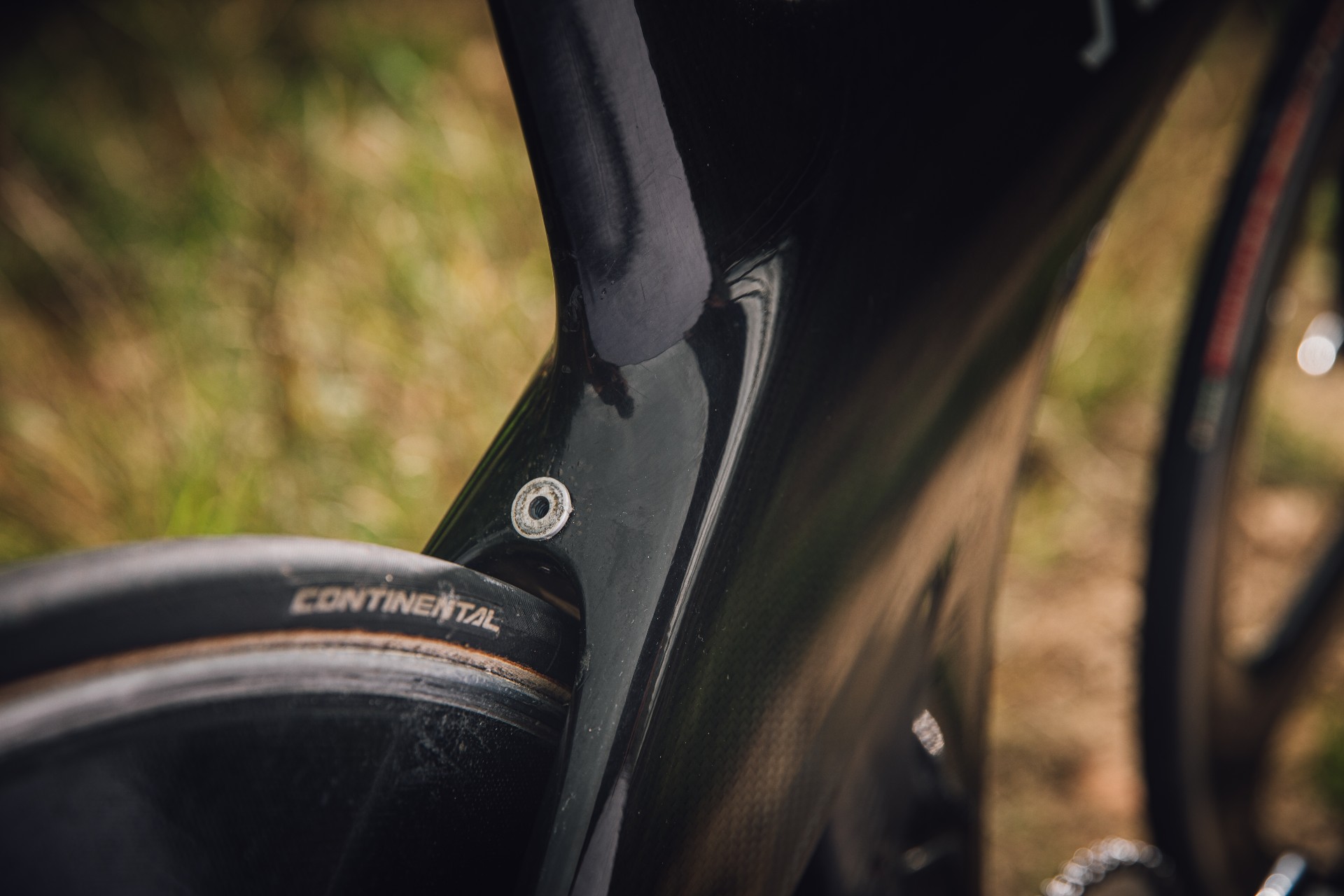
Building up a Hotta is surprisingly straightforward. It takes standard components with nothing proprietary except the rear brake caliper fixing. There’s no brake bridge so instead it uses an aluminium sleeve and a fragile grub screw that’s infuriatingly easy to strip. A fixed build solves this of course.
I had been worried that ferrules and even whole cable outers could disappear inside the monocoque to rattle around forever, but in fact cable routing is simplicity itself.
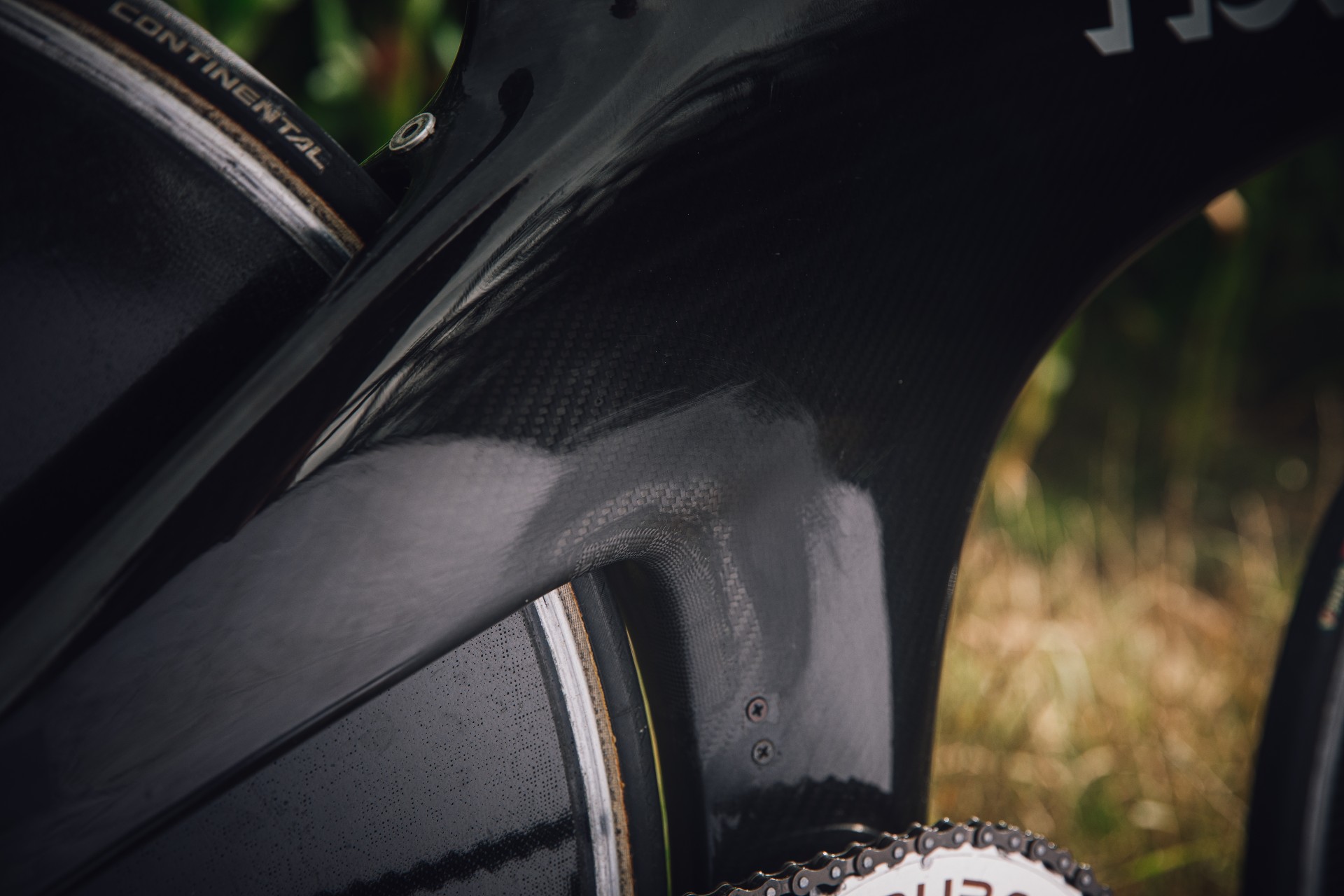
I’ve been through four builds in 15 years and two strippings of the dreaded rear caliper grub screw sleeve before I settled on this setup - completed especially for the Goodwood UCI Bandit category last year (see below). In that time it has also had a carbon repair at the junction of the stay and the rear of the seatpost, if you can call it that. The strut-like frame member twists slightly under pedalling force as it’s not braced by traditional chainstays and my guess is that the resin had brittled slightly and cracked under stress.
The Hotta works a treat as a fixed bike. The bottom bracket is track height (28.5cm) so there’s plenty of cornering clearance - but the rear spacing is 130mm like a road bike’s.
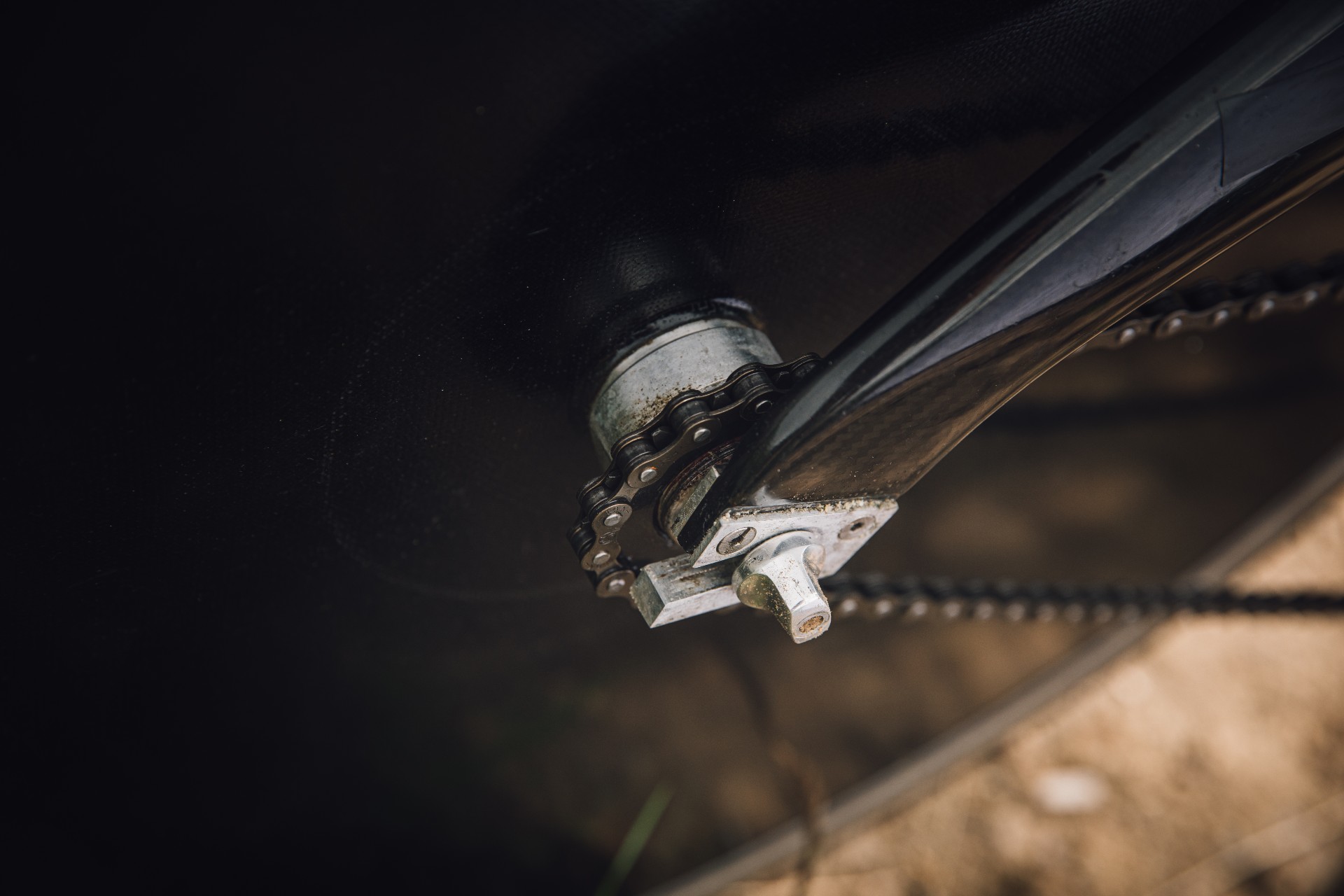
I’m using an ancient HED road disc with a screw-on fixed adapter. It works fine with a QR instead of track nuts but you need to use a good-quality skewer, such as the Dura-Ace one here, or it is possible to pull the wheel over with an overenthusiastic starting effort.
There's a HED tri-spoke front, tubular like the disc.
The HED Vantage 8 bars match nicely and were an Ebay find - as was the disc - after I had borrowed the original Deda cockpit for another bike, but because they have a low stack height and the Hotta has a short head tube I’ve flipped the stem for a more modern (and ageing back-friendly) forearms-up position.
I’m using a gear of 54x15, which is perfect for flat or undulating time trialling. I suspect it was riding a big gear in an overly hilly TT that cracked the frame. Another good excuse for avoiding hills.
It’s surprisingly light at 7.7kg - another reason why it works so well as a fixed bike - and has a sublime ride quality, which is also surprising. And I can’t get enough of the rumbling noise it makes. Riding one of these bikes is a real sensory experience.
Hottas are certainly becoming rarer but don’t attract collectors or investors like the Lotus 110 does - to which the Hotta is inevitably compared. Regardless, I’m not planning to sell mine any time soon. Swapping it for that Trek was one of the best decisions I’ve made in my cycling life. It’s a keeper.
My riding
My best year was 2006, which was also the year my right sacroiliac joint decided it didn't like time trialling as much as I did. In that year I rode the Hotta most weekends during the season, back pain allowing.
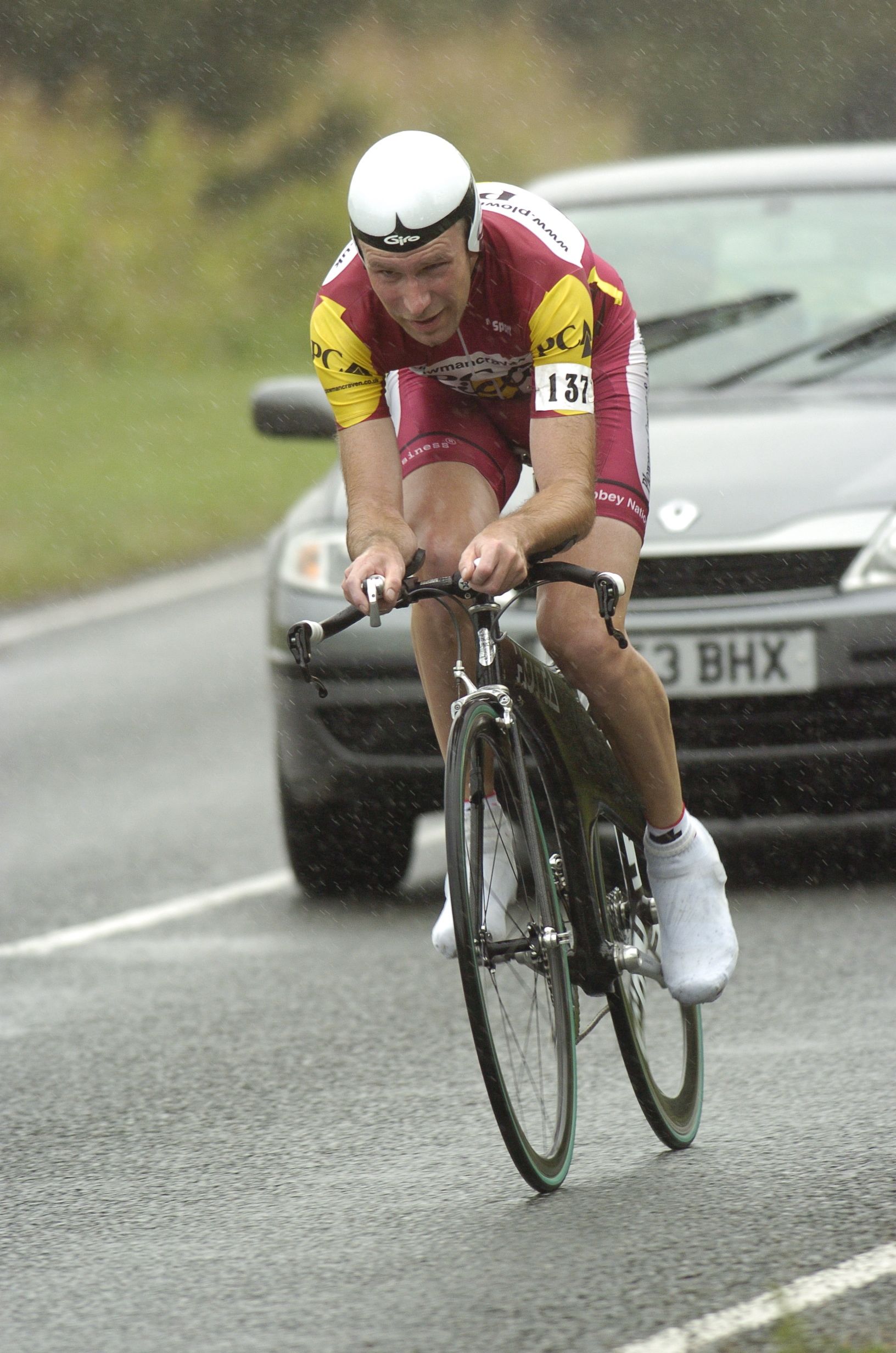
This picture is from the 2006 British National Time Trial Championship (known as the 'national circuit championships') in September and was one of my last events before I took a break to try to solve my bad back.
According to my training diary I was seventh in my category (35-40) but "disappointed" to have gone slower than the previous time I rode the course in an open event two weeks earlier. Looking at the horrible day, it's not surprising. I used to fastidiously file all my start and result sheets but I can't find that particular one, which suggests I threw it away in disgust.
I actually sold the Hotta to Ciclos Uno at the end of the 2006 season, thinking my time trialling days were over, but bought it back a few months later once I realised they weren't if I just scaled it back a bit. Fortunately for me their customer who bought it didn't like it and was only too happy to return it.
Recently I’ve loved wheeling out the Hotta again at Goodwood for the UCI Bandit pre-1999 category, included in A3crg’s excellent events there.

Goodwood is perfect for fixed: there’s a drag after the finishing straight from Fordwater around St Mary’s but I’ve found 54x15 or 97.2 inches encourages me to push harder where I might otherwise have given up and changed down - and there’s certainly no danger of spinning out.
I've enjoyed these Goodwood TTs so much that I made this excellent photo above by the event photographer Ross Mackley my profile pic - in case you were wondering where you'd seen it before.
My next event with the Hotta will be a one-off nose-thumbing time trial at Thruxton on October 10 organised by the Lotus 110 Club and Antelope RT to celebrate 25 years since the Lugano Charter was signed - the UCI regulation that banned monocoque bikes.
Future upgrades
Fixed-wheel riding is always hard on rear hub bearings, even though I’m always careful to get the chain tension right and avoid those tight spots that can chomp through bearings very quickly. But this old HED disc has developed a bit of play, so although it’s an unglamourous upgrade it’s what I’m going to have to deal with next.
The repair to the BB strut by HQ Fibre Products is neat but has left a very visible carbon patch, and the weave of the prepreg they used doesn't quite match. Even though it could be left as an interesting battle scar I’m still considering a respray to cover it up. This bike was originally painted rather than nude carbon - it was stripped down to nude carbon and lacquered by its former owner - but I have no idea what colour it was. Red with yellow decals - as ridden by Richard Prebble - was the commonest scheme and it’s the classic one for Hottas.
Spec
- Frame: Hotta TT700 (size M)
- Fork: Profile Carbon 1in
- Chainset: FSA Carbon Pro 175mm
- Chainring: Shimano Dura-Ace 54t
- Sprocket: Shimano Dura-Ace 15t
- Wheels: HED Disc/HED3
- Tyres: Continental Podium/Vittoria Corsa CS tubular
- Bars: HED Vantage 8
- Stem: ITM Millennium
- Seatpost: USE Alien Carbon
- Saddle:Selle San Marco RegalE
- Weight: 7.7kg

Thank you for reading 20 articles this month* Join now for unlimited access
Enjoy your first month for just £1 / $1 / €1
*Read 5 free articles per month without a subscription

Join now for unlimited access
Try first month for just £1 / $1 / €1
Get The Leadout Newsletter
The latest race content, interviews, features, reviews and expert buying guides, direct to your inbox!
Simon Smythe is a hugely experienced cycling tech writer, who has been writing for Cycling Weekly since 2003. Until recently he was our senior tech writer. In his cycling career Simon has mostly focused on time trialling with a national medal, a few open wins and his club's 30-mile record in his palmares. These days he spends most of his time testing road bikes, or on a tandem doing the school run with his younger son.
-
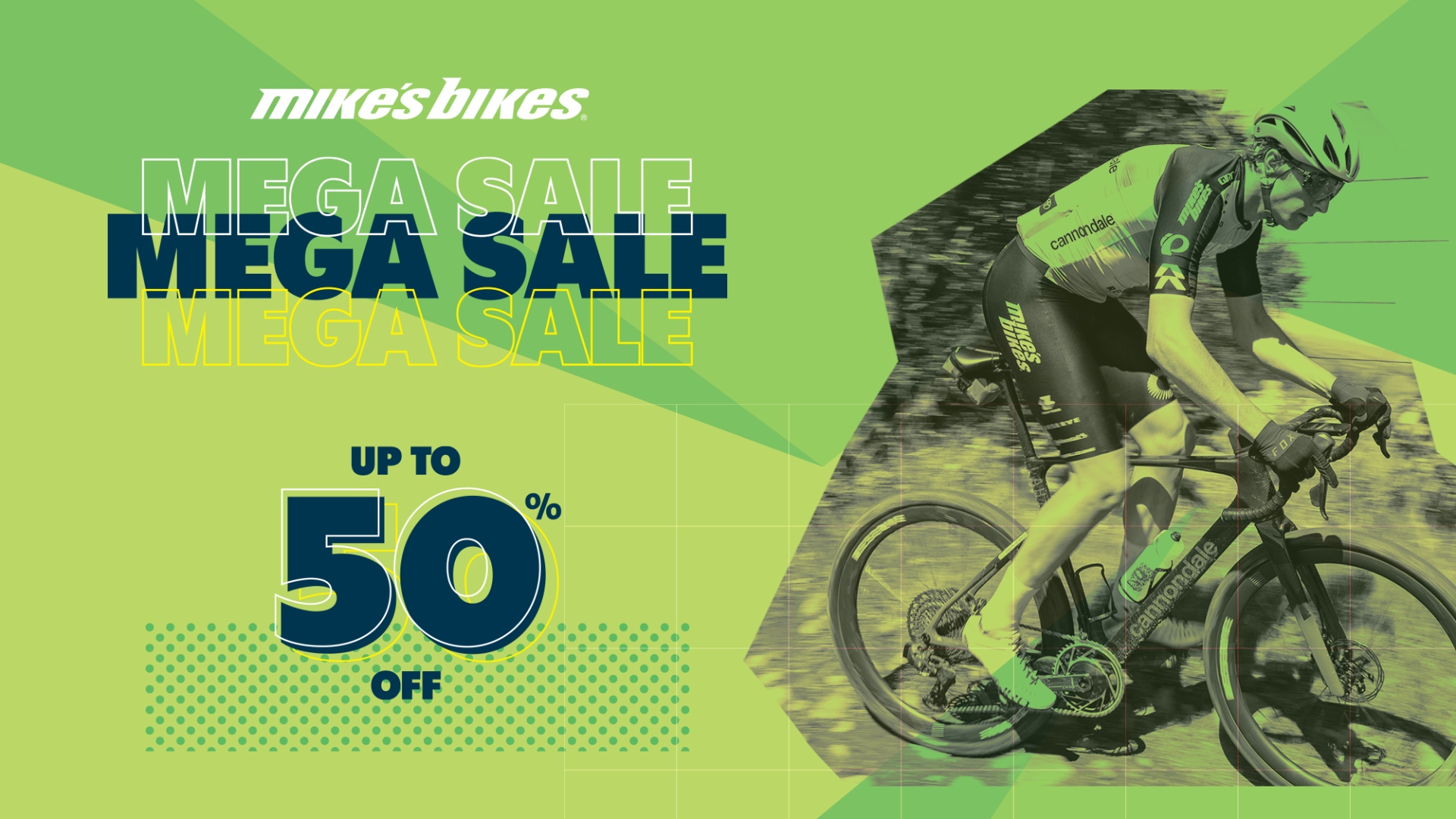 Mike's Bikes 'mega sale' is live and site wide with discounts over 50%
Mike's Bikes 'mega sale' is live and site wide with discounts over 50%Running until Sunday all products are discounted including complete bikes, clothing, smart trainers and much more
By Luke Friend
-
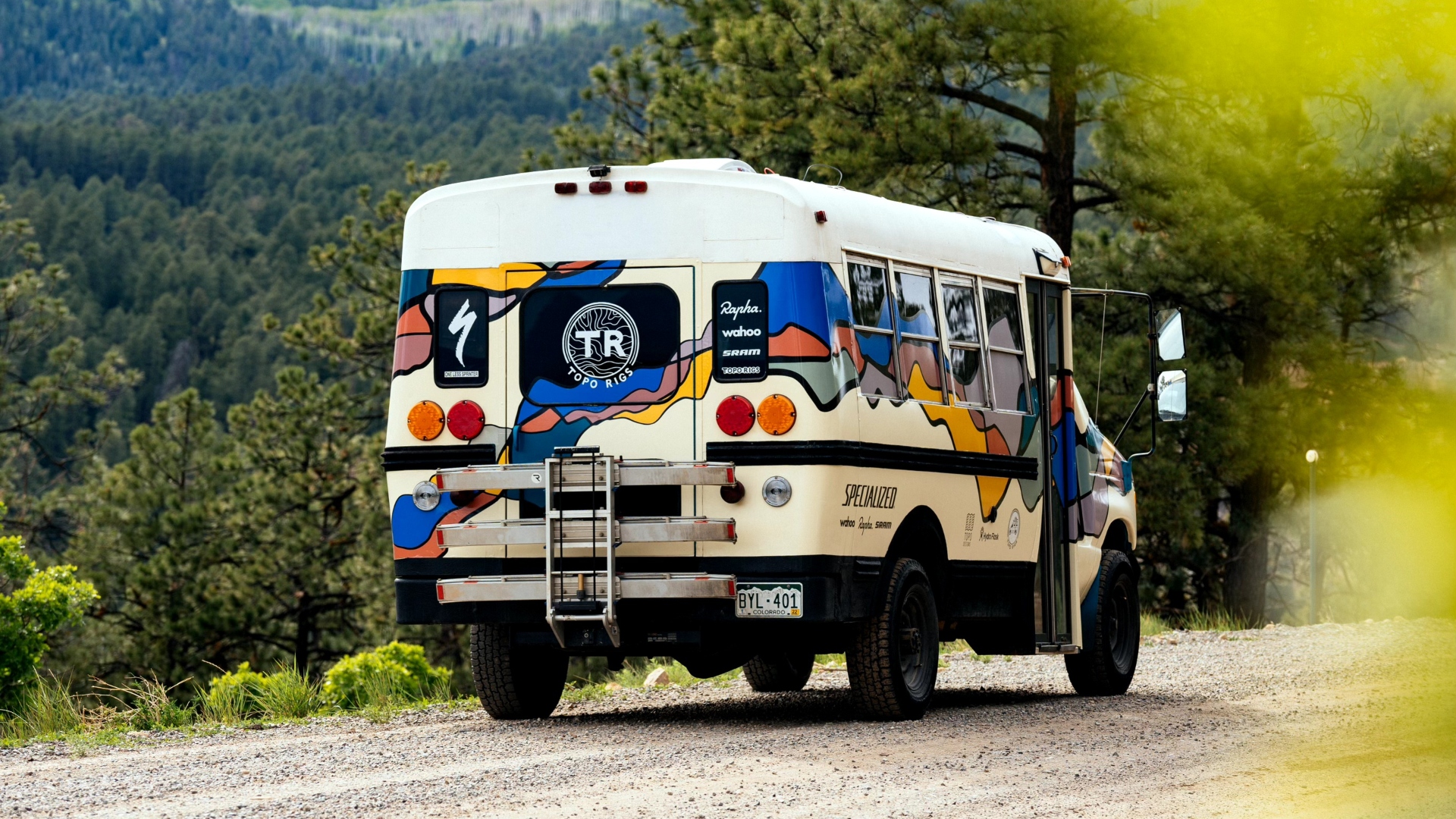 Can you be a pro athlete and an environmentalist? Earth Day reflections from a pro cyclist trying to be both
Can you be a pro athlete and an environmentalist? Earth Day reflections from a pro cyclist trying to be bothHow Sarah Sturm reconciles her life as a pro cyclist with her environmental values
By Sarah Sturm